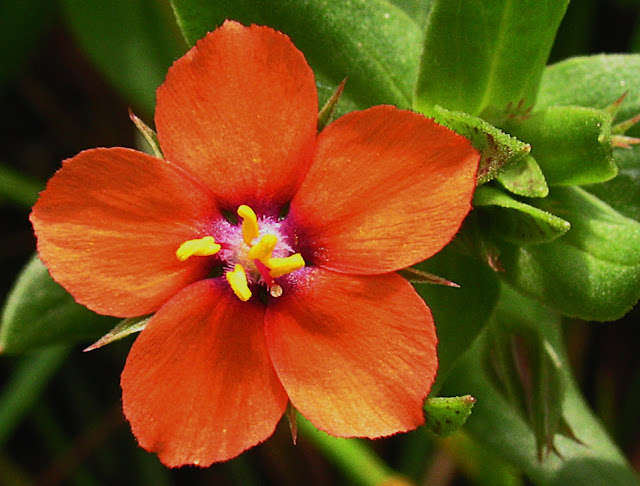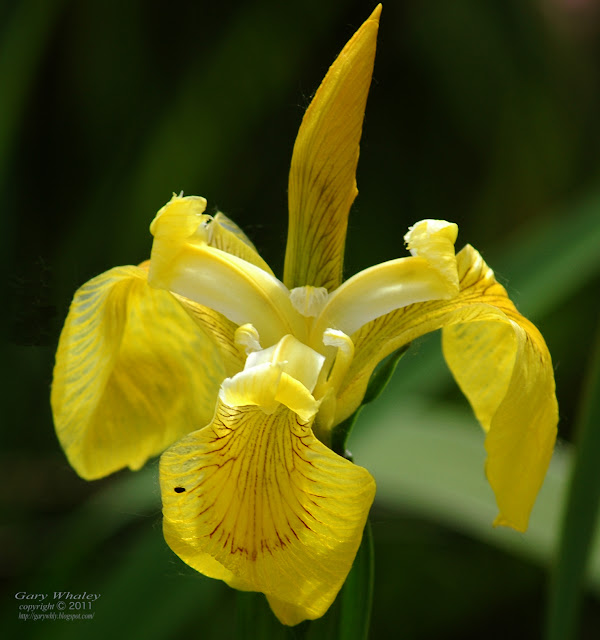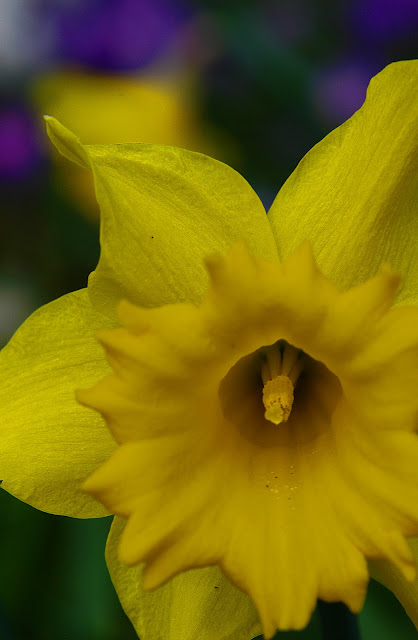Saturday 20 August 2011
Scarlet pimpernel
Scarlet pimpernel (Anagallis arvensis; also known as red pimpernel, red chickweed, poorman's barometer, poor man's weather-glass,[1] shepherd's weather glass or shepherd's clock) is a low-growing annual plant found in Europe, Asia and North America. Scarlet pimpernel flowers are open only when the sun shines.
Sunday 24 July 2011
Evening Primrose
The species vary in size from small alpine plants 10 cm tall (e.g. O. acaulis from Chile), to vigorous lowland species growing to 3 m (e.g. O. stubbei from Mexico). The leaves form a basal rosette at ground level and spiral up to the flowering stems; the leaves are dentate or deeply lobed (pinnatifid). The flowers open in the evening, hence the name "evening-primrose", and are yellow in most species but white, purple, pink or red in a few. Most native desert species are white. The fragrant tufted evening-primrose Oenothera caespitosa, a Southwestern species, first blooms white but turns pink or light magenta.
Saturday 11 June 2011
Common Knapweed/Hoverfly
Centaurea nigra is a species of flowering plant in the daisy family known by the common names Lesser Knapweed, Common Knapweed and Black Knapweed. A local vernacular name is Hardheads.
It is native to Europe but it is known on other continents as an introduced species and often a noxious weed.
It is native to Europe but it is known on other continents as an introduced species and often a noxious weed.
Sunday 5 June 2011
Yellow Iris (Yellow Flag)
It is a herbaceous perennial plant growing to 1-1.5 m (or a rare 2 m) tall, with erect leaves up to 90 cm long and 3 cm broad. The flowers are bright yellow, 7-10 cm across, with the typical iris form. The fruit is a dry capsule 4-7 cm long, containing numerous pale brown seeds.
Sunday 22 May 2011
Sunday 15 May 2011
Moss Forest
Mosses have stems which may be simple or branched and upright or lax, simple leaves that often have midribs, roots (rhizoids) that anchor them to their substrate, and spore-bearing capsules on long stems. They harvest sunlight to create food through photosynthesis.[3][4] Mosses do not absorb water or nutrients from their substrate through their roots, so while mosses often grow on trees, they are never parasitic on the tree.
Sunday 8 May 2011
Greater Stitchwort
Stellaria holostea (Addersmeat, or Greater Stitchwort) is an ornamental plant native of Europe.
It can grow up to 50cm in height, with leaves that are long, narrow and fresh green.[1] The flowers are white, 20-30mm across and have five distinctive petals split to about half way down.
It can grow up to 50cm in height, with leaves that are long, narrow and fresh green.[1] The flowers are white, 20-30mm across and have five distinctive petals split to about half way down.
Sunday 1 May 2011
Bluebells
The common bluebell flowers in April and May. The flowers are lavender-blue, pendulous, tubular with the petals recurved only at the end, and borne on one side of the flowering stem only. The flower stem is 10–30 cm long and bends over at the top. The anthers are yellowish-white or cream and are attached more than halfway up on the inside the tube. The flowers are pleasantly and usually strongly scented.
Sunday 24 April 2011
Dame's-violet
Hesperis matronalis is a herbaceous plant species in the mustard family, Brassicaceae. It has numerous common names including: Dame’s Rocket, Damask Violet, Dame’s Violet, Dames-wort, Dame’s Gilliflower, Night Scented Gilliflower, Queen’s Gilliflower, Rogue’s Gilliflower, Summer Lilac, Sweet Rocket, Mother-of-the-evening and, Winter Gilliflower. Plants are biennials or short lived perennials, native to Eurasia and cultivated in many other areas of the world for their attractive spring blooming flowers.
Sunday 17 April 2011
Common Gorse
Common gorse flowers a little in late autumn and through the winter, coming into flower most strongly in spring. Western Gorse and Dwarf Furze flower in late summer (August-September in Ireland and Britain). Between the different species, some gorse is almost always in flower, hence the old country phrase: "When gorse is out of blossom, kissing's out of fashion". Gorse flowers have a distinctive coconut scent, experienced very strongly by some individuals, but weakly by others.
Sunday 10 April 2011
Hawthorn Bloom.
Crataegus monogyna, known as Common Hawthorn, is a species of hawthorn native to Europe, northwest Africa and western Asia. Other common names include may, mayblossom, maythorn, quickthorn, whitethorn, motherdie, and haw. This species is one of several that have been referred to as Crataegus oxyacantha, a name that has been rejected by the botanical community as too ambiguous.
Sunday 3 April 2011
Catkin Buds
Sunday 27 March 2011
Periwinkle
Periwinkle is a color in the blue-violet family. Its name is derived from the lesser periwinkle or myrtle herb (Vinca minor) which bears flowers of the same color.
Sunday 20 March 2011
Spring Daffodil
"Daffodil" Narcissus (pronounced /nɑrˈsɪsəs/ is the botanic name for a genus of mainly hardy, mostly spring-flowering, bulbs in the Amaryllis family native to Europe, North Africa, and Asia. There are also several Narcissus species that bloom in the autumn.
Sunday 13 March 2011
Purple Delight
Crocus (plural: crocuses, croci) is a genus of perennial flowering plants, native to a large area from coastal and subalpine areas of central and southern Europe (including the islands of the Aegean), North Africa and the Middle East, across Central Asia to western China.
Tuesday 1 March 2011
A Little Gem.
 |
| The Welcome Sign |
| The Reception Area. |
 |
| Reed bunting. |
| Great Willow Herb. |
| Helpful signs. |
 |
| River Waveney. |
Saturday 26 February 2011
First blog with blossom.
 This is my first blog, please go easy on me. Out and about with the Nikon last week hoping to take a few snaps and struck lucky with these pics of the blossom, i must admit that i was quite shocked to see any blossom at all this time of year, but you never know whats through your view finder.
This is my first blog, please go easy on me. Out and about with the Nikon last week hoping to take a few snaps and struck lucky with these pics of the blossom, i must admit that i was quite shocked to see any blossom at all this time of year, but you never know whats through your view finder.Also there were plenty of Snowdrops about, and of course i took a few snaps of them as well.
Subscribe to:
Posts (Atom)















